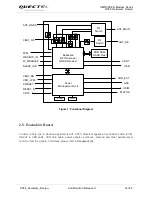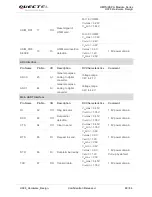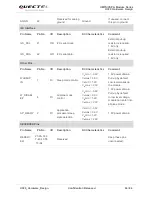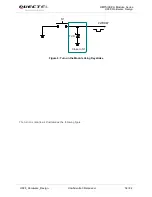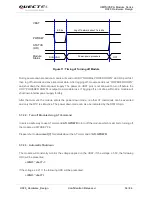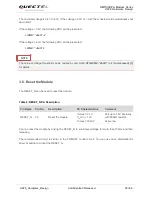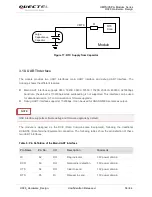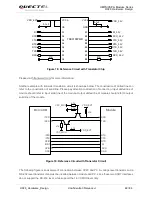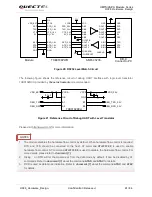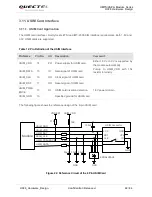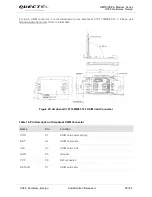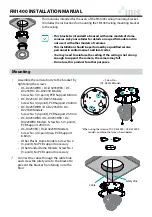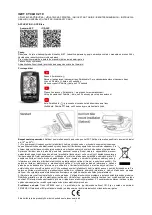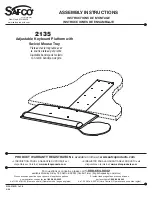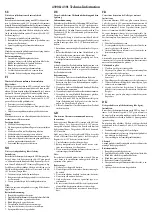
UMTS/HSPA Module Series
UC20 Hardware Design
UC20_Hardware_Design Confidential / Released 30 / 84
Module
VBAT_RF
VBAT_BB
VBAT
C1
100uF
C6
100nF
C7
33pF
C8
10pF
+
+
C2
100nF
C5
100uF
C3
33pF
C4
10pF
FB1
FB2
D1
5.1V
Figure 6: Star Structure of the Power Supply
Please pay special attention to the power supply design for applications. Make sure the input voltage will
never drop below 3.4V. If the voltage drops below 3.4V, the module will turn off automatically. The PCB
traces from the VBAT pins to the power source must be wide enough to ensure that there isn’t too much
voltage drop occurs in the transmitting procedure. The width of VBAT_BB trace should be no less than
1mm, and the width of VBAT_RF trace should be no less than 2mm, and the principle of the VBAT trace is
the longer, the wider.
3.6.3. Reference Design for Power Supply
The power design for the module is very important, since the performance of power supply for the module
largely depends on the power source. The power supply is capable of providing the sufficient current up to
2A at least. If the voltage drop between the input and output is not too high, it is suggested to use a LDO
to supply power for module. If there is a big voltage difference between the input source and the desired
output (VBAT), a buck converter is preferred to be used as a power supply.
The following figure shows a reference design for +5V input power source. The designed output for the
power supply is 3.88V and the maximum load current is 3A.
DC_IN
C1
C2
MIC29302WU
U1
IN
OUT
E
N
G
N
D
A
D
J
2
4
1
3
5
VBAT
100nF
C3
470uF
C4
100nF
R2
100K
47K
R3
470uF
470R
51K
R4
R1
1%
1%
Figure 7: Reference Circuit of Power Supply

